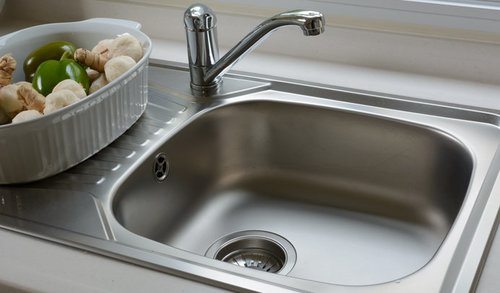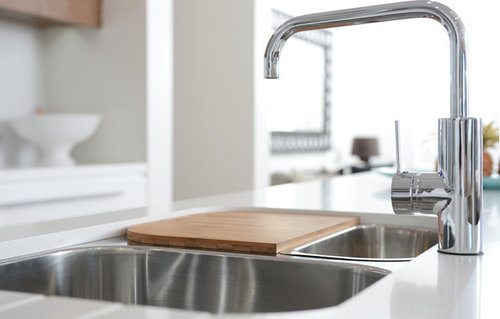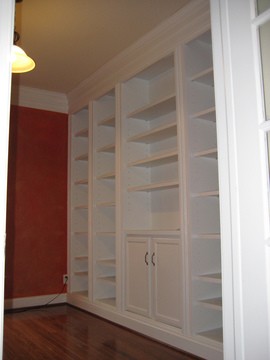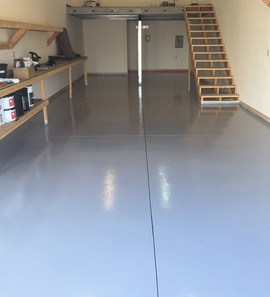Single Bowl vs Double Bowl Sink
Single Bowl Sink
$375 - $550
(33-inch sink installed)
VS
Double Bowl Sink
$475 - $675
(33-inch sink installed)
Cost to install a single-bowl or a double-bowl kitchen sink varies greatly by region (and even by zip code).
To get free estimates from local contractors, please indicate yours.
Single Bowl Sink

- Can handle large items like pots
- Wider range of sizes that fit more kitchens
- Easier faucet placement
- Less expensive to purchase and install
- May be easier to maintain
- Not as versatile
- May use more water and detergent
- May require more counter space
(33-inch sink installed)
Get free advice and estimates from kitchen designers in your city.
Double Bowl Sink

- Versatile, can be used for prep or drying
- May use less water and detergent
- Can free up counter space
- Harder to wash large items
- Some materials may need more maintenance
- Fewer faucet installation options
- More expensive to purchase and install
- Harder to fit in small kitchens
(33-inch sink installed)
Get free advice and estimates from kitchen designers in your city.
The kitchen is the most commonly remodeled room in the home, and the counter and sink are the most frequently replaced items. When it is time to choose a new sink for your kitchen, you have many choices, not only in the material and shape of the sink but the configuration as well. Most sink companies have an array of varying sizes, with single and double bowl sinks being the two most common configurations. Both have their positive and negative attributes that may make one a better fit for your kitchen. We will outline the differences between the two below, so you can decide which one will work better in your space.
Configuration and Use
You probably use your sink more than anything else in the kitchen, so the size, shape, and number of bowls you choose is ultimately dictated by how you intend to use it. If you do a lot of cooking and washing up, having a double sink can have advantages. For example, if you have one bowl for the disposal and one for soaking, you could still access the disposal with a double sink while you soak - in a single bowl, you would have to choose. Likewise, it’s possible to separate heavier items from more delicate items when using a double sink, while in a single sink delicate items may become broken more easily. Having two sinks also allows you to keep one side clean while you use another for items that may harbor bacteria such as raw meats.
While the ideal size for a sink is roughly 21-inches for the main sink, with a second sink of 15-inches, this size may not always be possible for every kitchen. Single bowl sinks are often available in the same overall size as double sinks but have the added benefit of being available in a range of smaller sizes as well. While a double sink needs to be large enough to accommodate two bowls, single bowl sinks can take up relatively little space. So, for smaller kitchens or ones with a corner sink installation, a single bowl sink, such as the popular D-shape bowl, could be a better fit. Finally, if your cabinetry uses a small sink base cabinet, you may find that you have more options for sink styles when selecting a single bowl because double bowl sinks require a larger base cabinet. In new construction, it’s possible to upgrade your cabinet, but if you’re only replacing the countertop and sink, you are more limited by what cabinet size you already have.
Double bowl sinks also come in a range of sizes and configurations, from two bowls of equal size and shape to a large compartment with a smaller side compartment. This provides versatility in the way you use your sink. It is difficult, however, to soak a large pan in a double bowl sink because of the partition between the two bowls. Therefore, single bowl sinks are more useful for things like washing large pots or babies, while a double bowl sink has more options for how to use the sink.
Saving Counter Space
If you use every inch of available counter space in your kitchen for storage, food prep, and decor, then double bowl sinks are useful with the second bowl. Using a double bowl sink with two large bowls gives you the option of placing a drying rack in the sink rather than on the counter. So, you can wash dishes in one bowl and dry them in the other without needing counter space.
Some single bowl sinks have a built-in 1 drying rack on one side, but this reduces the washing space. The size of the sink is always dictated by the sink base cabinet, so when you have limited counter space, a double bowl sink may provide the storage and drying area needed. Using a single bowl sink in a small kitchen also maximizes counter space, providing more prep room and counter storage than with a larger sink.
Installation
As far as the installation of the sink is concerned, there is little difference between a single and double bowl. Both sinks are held in place with epoxy 2 and sink clips. A large C-clamp will hold the sink to the counter while the epoxy 2 dries. The difference in the installation is when it is time to connect the plumbing.
Because a single bowl sink has only one drain, the installation is faster, easier, and cheaper. Placement of the faucet is also easier because there is only one bowl requiring water.
Double bowl sinks have two drains, which need to connect to one another before entering the final waste trap. One side of the sink may have a garbage disposal, while the other does not, which increases the difficulty. In addition, having a double bowl sink raises the question of where the faucet will be placed. If both sides of the sink will be used for washing, the faucet needs to be located so that it can fill both sides.
Costs
The cost of your sink is largely determined by the size and material, but double sinks typically cost more than single bowl sinks of the same size and material made by the same company.
A 33-inch single bowl, stainless steel, undermount sink costs $225 - $400 on average, while a double bowl sink of the same size costs around $300 - $500. The average cost of installing a single bowl sink is around $150 for a total of $375 - $550 while the average cost of installing a double bowl is $175 for a total of $475 - $675. The increased installation cost includes the additional hardware necessary.
Combining Your Sink with a Dishwasher
Dishwashers are common additions to many kitchens and are installed near the sink for easy access. Either sink works with a dishwasher, although because you will not be using the sink for dishes, a single basin sink may be more useful for cleaning items too large for the dishwasher. Neither sink affects the use of the dishwasher, however.
Water and Detergent Use
By and large, single and double sinks use approximately the same amount of water if you are using the entire sink. However, a double sink that uses only one half for washing may use less water. Because only half the sink is in use, it is possible to achieve a usable water depth without as much liquid volume. The same holds true for the amount of detergent.
Maintenance
Your sink’s maintenance will be dictated by the material. Granite or quartz composite sinks require no additional maintenance. However, some sinks, which show wear more easily like solid surface or copper, may show wear marks on the partition between the two sinks of a double basin if you lean things like baking sheets against the top edge. This may require more cleaning to prevent stains.
Remodeling Terms Cheat Sheet
Definitions in laymen's terms, cost considerations, pictures and things you need to know.See full cheat sheet.
 1 Built-in: An item of furniture, such as a bookcase or set of cabinets, that is built directly into the structure of the room. Built-ins are therefore customized to the room and not detachable
1 Built-in: An item of furniture, such as a bookcase or set of cabinets, that is built directly into the structure of the room. Built-ins are therefore customized to the room and not detachable
 2 Epoxy: An adhesive, plastic, paint, or other material made from polymers containing epoxide groups. Epoxy is best used for bonding or for creating a protective coating
2 Epoxy: An adhesive, plastic, paint, or other material made from polymers containing epoxide groups. Epoxy is best used for bonding or for creating a protective coating
How much does it cost to install a single-bowl or a double-bowl kitchen sink in my city?
Cost to install a single-bowl or a double-bowl kitchen sink varies greatly by region (and even by zip code).
To get free estimates from local contractors, please indicate yours.